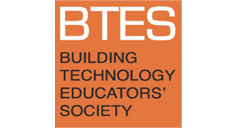From Informational Barrier to Ethical Obligation: Evolving Perceptions of Teaching Energy in Architecture
Abstract
In 1973, the OPEAC oil embargo shocked America out of its energy complacency—the era of cheap, seemingly limitless energy had come to an abrupt, disruptive halt. The Association of Collegiate Schools of Architecture (ACSA) responded, publishing Architecture, Energy & Education in 1984, a mere 11 years after the energy crisis began.
Architecture, Energy & Education identified four barriers to teaching energy in architecture: methodological, structural, attitudinal, and informational. Of the four barriers, the informational barrier was arguably the most formidable, because energy modeling was slow and inaccessible during the 1980s. However, this situation rapidly changed in the 1990s and early 2000s during what has been called the “digital turn in architecture.” With more computing power and accessible, graphic-based interfaces, energy modeling left the realm of the programming specialist and joined the realm of the practitioner. Flash forward to today, when architects have access to nearly real-time energy modeling. This paper argues that the accessibility of such modeling mandates that architects use it for the benefit of society. In other words, the digital turn has resulted in an ethical obligation.
Keywords: pedagogy, energy, sustainability
How to Cite:
Cosper, C., (2018) “From Informational Barrier to Ethical Obligation: Evolving Perceptions of Teaching Energy in Architecture”, Building Technology Educators’ Society 2019(1). doi: https://doi.org/10.7275/btes.489
Downloads:
Download PDF
125 Views
57 Downloads

